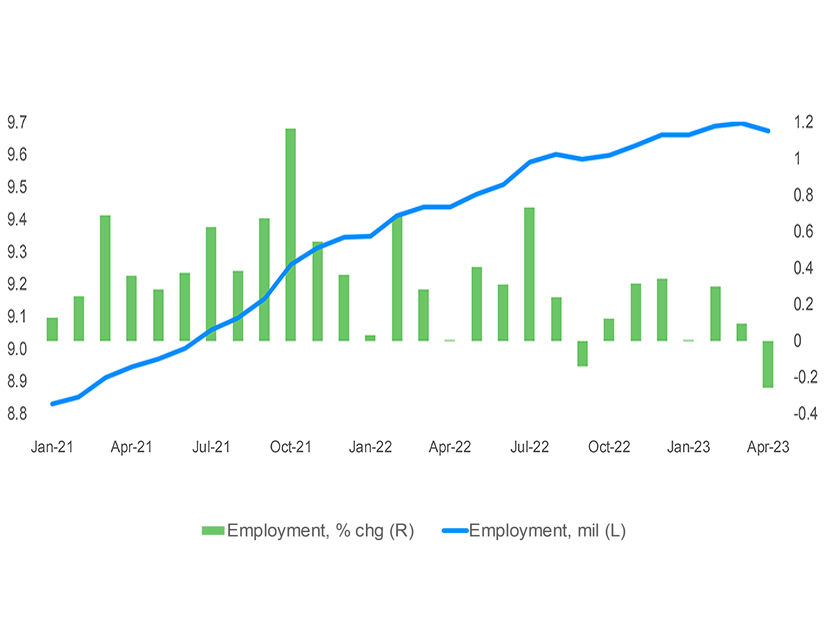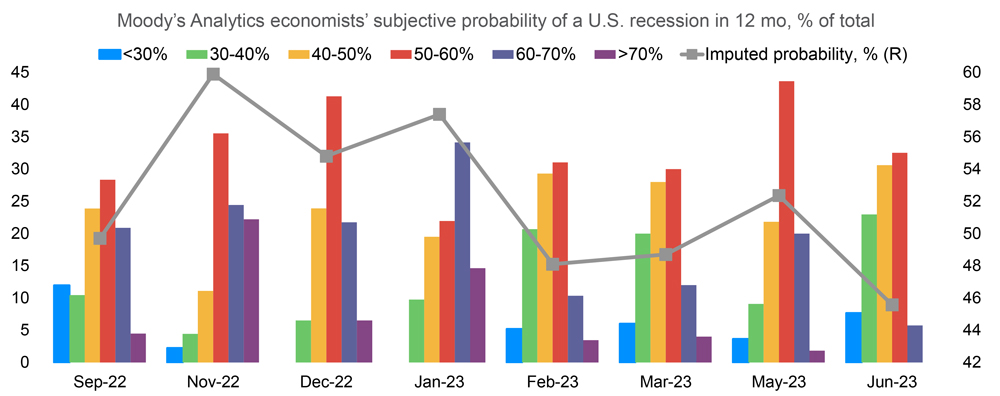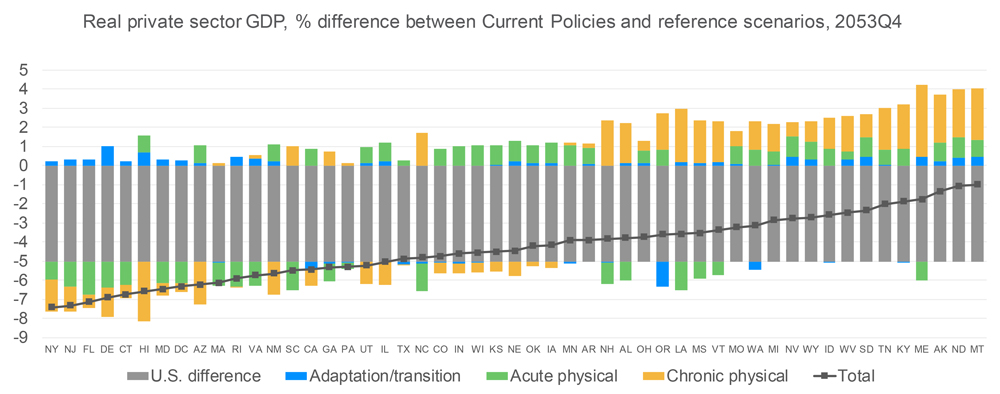ALBANY, N.Y. — New York has emerged from the COVID-19 pandemic forever changed and now faces a growing list of challenges — including climate change and uncertainty in energy prices — that it must adapt to, according to a presentation given by Moody’s Analytics during NYISO’s Spring Economic Conference last week.
Moody’s economists believe a national recession is avoidable but that New York has a troubling future ahead as it continues to recover from the systemic shocks experienced during the pandemic while confronting a changing work culture, unfamiliar housing and demographic dynamics, and climate change.
Energy and resource prices also remain a sticking point for the economy, but Moody’s noted that prices have come into clearer focus as pandemic-era volatility abates and geopolitical tensions cause fewer fluctuations.
“It was a very mild winter … and that helped keep a lid on prices,” said Adam Kamins, a senior director at Moody’s. “We’ve also seen the U.S. and OPEC fill the hole left by the lack of supply from Russia; while on Russia’s end, they have been able to increase exports to countries like China and India at relatively cheap prices.
“That has all been good news for the affordability of oil and gas and brought it down to a much more stable place,” he said. “Our expectation is that we’re going to see continued increases in prices for the next year or so, but by 2024 prices will begin to come down as more U.S. supply comes online.”
Questions & Discussion
Kamins answered NYISO stakeholders’ questions, including concerns about natural gas and climate change impacts.
Given the recent volatility of energy prices, Anthony Abate, lead energy market adviser with the New York Power Authority, asked whether Moody’s was comfortable with assuming that the new normal for natural gas prices would be around $5/MMBtu instead of the previous $3 range.
“Natural gas prices have a lot of variation,” Kamins said. “And there are lots of factors, including geopolitical ones, that no model can pick up … All of this means that there’s a high degree of uncertainty around these forecasts.”
“Our model suggests prices will move upward, but I would not take that to the bank,” he added.
Erin Hogan of the state’s Utility Intervention Unit pointed out that gas supplies are unlikely to be a limiting factor but rather pipeline congestion will be more determinative of prices. She asked whether building more pipeline capacity could influence price.
“It could,” Kamins said. “But there are some potential supply issues just around the fact that drillers have been hesitant to drill because they want to keep prices as high as they can … and so that could keep a ceiling on supply that puts upward pressure on prices. But I think that you’re right that the bigger limiting factor would be capacity.
“We thought there’d be a glut of U.S. oil and gas production after Russia’s invasion, but producers are being very disciplined and want to keep supply in check to keep prices relatively high,” he said.
Abate also asked how Moody’s has begun reflecting the growing threat of climate change in its state models or assessments to help predict future outcomes.
Kamins said that “we have made adjustments to our baseline forecasts” that typically include “some state intervention,” but “we also create custom forecasts that show the more extreme outcomes in terms of either more severe damage from climate change or a more complete and early intervention.”
In an email to RTO Insider, Kamins referred to his recently published whitepaper to provide context on how Moody’s accounts for climate change in its forecasts, writing, “we used our model to account for transition risk based on the industrial composition of states and metro areas.
“Then we used exposure scores from RMS [Risk Management Solutions] … to adjust upward or downward for acute and chronic physical risk for individual economies based on their level of risk relative to a
weighted average.”
Other Decarbonization Presentations
The New York Power Authority, National Grid, and the Electric Power Research Institute (EPRI) also gave presentations during the conference, examining different parts of New York’s decarbonization.
NYPA updated NYISO on its advanced solar forecasting project, which gathers irradiance and load patterns to improve New York’s solar operations. The project uses ground-based “sky imager” sensors and advanced weather modeling systems to “true-up” New York’s solar load forecasting capabilities, said Greg Pedrick, a senior engineer with NYPA.
National Grid presented study results examining what it would take for New York to implement an electric vehicle highway charging network, finding that the state must act now to align net-zero transportation goals with wider electrification system planning. Some highway charging sites will use the same amount of power as small towns, so planning needs to consider how to centralize energy delivery to these “no-regret sites.”
The EPRI presented findings from a report that examined different scenarios New York could pursue to decarbonize its building stock and what those outcomes would be. The report, which builds on an earlier evaluation of electrification opportunities within New York, found that long-term economic and environmental benefits to decarbonizing the state’s building stock outweigh the costs, and that immediate action would deliver quicker results.




